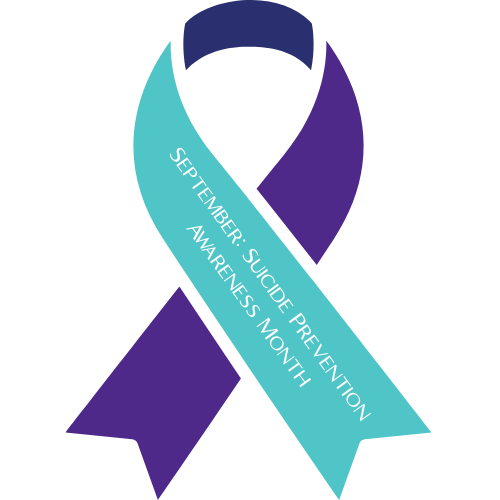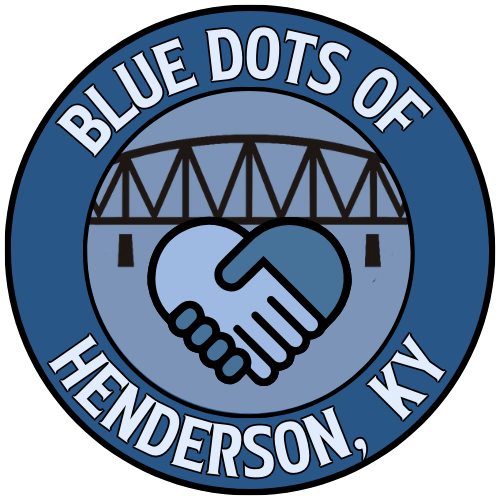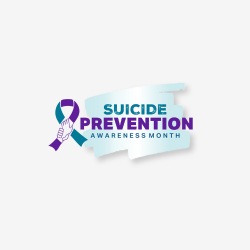September 2025

Author: Cori Wilke
Every 40 seconds, the world loses a life to suicide—yet every one of those lives was worth saving. Suicide doesn’t just end one person’s pain; it ripples outward, leaving families, friends, and communities grieving and asking “why.” Suicide Prevention Awareness Month is not only a time to remember those we’ve lost but also a reminder that awareness and resources can prevent future loss. By learning the signs, speaking up, and sharing support, we can help create a world where fewer lives are cut short by silence and stigma.
This blog is a guide to understanding suicide risk, recognizing warning signs, and connecting with resources that can save lives. Whether you are struggling yourself or want to help someone else, you are not alone—hope and healing are always within reach.
Recognizing the Warning Signs
Suicide rarely happens without warning. Many people show signs—some subtle, some direct—that they are in deep pain. Knowing these signs can make the difference between life and death.
Emotional and behavioral signs to watch for:
- Withdrawal from friends, family, or activities they once enjoyed.
- Expressions of hopelessness (“Things will never get better”).
- Sudden mood swings, irritability, or emotional numbness.
- Talking about being a burden or feeling worthless.
- Increased use of alcohol or drugs.
- Engaging in risky behaviors or self-harm.
- Changes in sleep (increased or decreased).
- Giving away possessions or saying goodbye in unusual ways.
Verbal cues that shouldn’t be ignored:
- “I wish I could just go to sleep and not wake up.”
- “Everyone would be better off without me.”
- “I can’t do this anymore.”
Important: Even if someone doesn’t say they want to die, persistent hopelessness and isolation are red flags. Trust your instincts—if you notice concerning changes, take them seriously. The risk for suicide is greater if these behaviors are new or increased, or linked to a painful change, event, or loss.
How to Help Someone in Crisis
It can feel overwhelming to know what to do if someone you care about is struggling. Many people fear saying the wrong thing, but silence can be more harmful than an imperfect conversation.
Start with compassion:
- Approach them in a private, safe space.
- Use gentle, nonjudgmental language.
- Express concern: “I’ve noticed you’ve seemed really down lately, and I’m worried about you.”
What to say:
- “You are not alone—I’m here for you.”
- “Your life matters to me.”
- “It’s okay to talk about what you’re going through.”
- “Let’s find help together.”
What not to say:
- “It’s not that bad, you’ll get over it.”
- “Other people have it worse.”
- “You just need to toughen up.”
These dismissive phrases can deepen feelings of shame or isolation. Instead, focus on listening and validating their feelings.
Encourage professional help:
Offer to help them contact a mental health professional, call a hotline, or connect with supportive resources. Sometimes, just knowing someone will walk beside them makes all the difference.
Immediate Crisis Resources
If someone is in immediate danger of attempting suicide, call emergency services right away (911). If the situation is urgent but not life-threatening, the following resources are available 24/7:
- 988 Suicide & Crisis Lifeline (U.S.)– Call or text 988 to connect with trained crisis counselors.
- Crisis Text Line– Text HOME to 741741 to chat with a counselor.
- Veterans Crisis Line– Dial 988, then press 1.
- Visit the nearest emergency room or inpatient mental health facility.
- Deaconess Henderson Hospital (1305 N Elm St, Henderson, KY 42420)
- River Valley Behavioral Health @ The Crowne (107 E 2nd St Owensboro, KY 42303)
- Deaconess Cross Pointe (7200 E Indiana St Evansville, IN 47715)
Remember: Reaching out for help is a sign of strength, not weakness. Crisis lines are free, confidential, and staffed with people trained to listen and provide support.
Long-Term Support and Prevention
Suicide prevention isn’t only about emergencies—it’s also about ongoing support and creating protective factors that help people feel connected and valued.
Therapy and counseling:
Professional therapy can help individuals process trauma, build coping skills, and address underlying mental health conditions such as depression, anxiety, or PTSD. Options include:
- One-on-one counseling
- Group therapy
- Online therapy platforms for flexible access
Support groups:
Both survivors of suicide attempts and those grieving a loss can find comfort in peer support groups where experiences are shared without judgment.
Community involvement:
Educational workshops, awareness walks, and advocacy campaigns help reduce stigma and remind people they are not alone.
Building resilience:
Encouraging strong social connections, healthy coping strategies (journaling, exercise, mindfulness), and open conversations about mental health all contribute to suicide prevention.
Honoring Suicide Awareness Month:
September is a time to honor those we’ve lost, support those still struggling, and recommit ourselves to building a culture of openness and care.
Here are some ways to get involved:
- Share resources on social media to spread awareness.
- Attend or host community events such as suicide prevention walks.
- Have conversations—sometimes the most powerful action is simply asking someone how they’re really doing.
By normalizing these conversations, we chip away at the stigma that keeps too many people silent.
A Closing Message of Hope
Suicide Awareness Month reminds us of an essential truth: every life has value, and every life is worth fighting for. If you are struggling, know this—your story isn’t finished, and you do not have to face this battle alone. If you know someone who may be hurting, your care, presence, and willingness to connect them with help could save a life.
Together, through compassion, education, and action, we can shine a light in the darkness and build a future where hope always outweighs despair.
Additional Resources
“Creating a Healthier Life: A Step-By-Step Guide to Wellness”: https://library.samhsa.gov/sites/default/files/sma16-4958.pdf
https://library.samhsa.gov/sites/default/files/sma16-4958spanish.pdf (spanish version)
“Coping Tips for Traumatic Events and Disasters”: https://www.samhsa.gov/mental-health/disaster-preparedness/coping-tips
“How to Cope With Mental Health, Drug, and Alcohol Issues”: https://www.samhsa.gov/find-support/how-to-cope
“Mental Health, Drug and Alcohol: Signs You Need To Seek Help”: https://www.samhsa.gov/find-support/how-to-cope/signs-of-needing-help
“Mental Health, Drugs and Alcohol: How to Ask For Help?”: https://www.samhsa.gov/find-support/how-to-cope/how-to-ask-for-help
“A Guide for Taking Care of Yourself After Your Treatment”: https://library.samhsa.gov/sites/default/files/sma18-4355eng.pdf
“A Guide for Taking Care of Your Family Member After Treatment”: https://library.samhsa.gov/sites/default/files/sma18-4357eng.pdf
“A Journey Toward Health and Hope: Your Handbook for Recovery After a Suicide Attempt”: https://library.samhsa.gov/product/journey-toward-health-and-hope-your-handbook-recovery-after-suicide-attempt/sma15-4419
Infinite Hope Kentucky (located in Henderson): https://www.infinitehopekentucky.com

